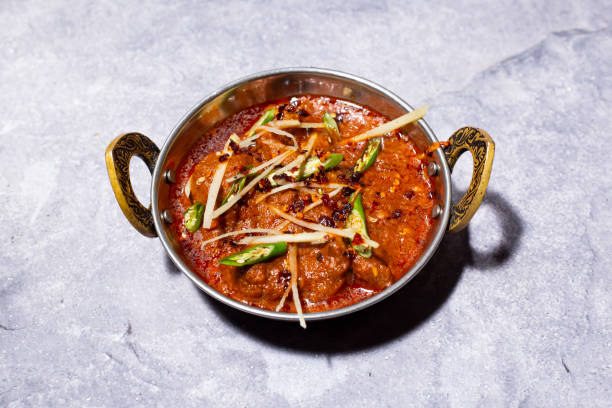If there is one dish that reigns supreme in South Asian cuisine, it’s undoubtedly Mutton Karahi. Imagine tender, juicy mutton pieces coated in a rich, aromatic, and spicy tomato-based gravy that clings perfectly to each bite. Just the thought of it can make your mouth water, can’t it? But have you ever wondered why your Mutton Karahi doesn’t taste as flavorful as the one served in your favorite restaurant? The secret lies in the technique, spices, and love that go into making this iconic dish. Today, we will unravel the mystery and guide you step-by-step to prepare a Mutton Karahi that will rival any chef’s creation.
The Allure of Mutton Karahi
Mutton Karahi is not just a dish; it’s a sensory experience. From the sizzling sounds in the pan to the tantalizing aroma wafting through the kitchen, this dish is a celebration of flavors and traditions. It’s the perfect choice for festive occasions, family dinners, or even a casual meal with friends. With our tried-and-tested recipe, you’ll soon become the go-to expert for making the perfect Mutton Karahi.
What Makes Mutton Karahi Special?
Mutton Karahi stands out because of its simplicity and the depth of flavor achieved using minimal ingredients. The name “Karahi” refers to the traditional wok-like cooking vessel used to prepare it, which enhances its rich taste. It’s a one-pot dish, but every ingredient plays a critical role in creating its signature flavor profile. Now, let’s dive into the process of making this masterpiece!
Ingredients You’ll Need
Before we start cooking, gather the following fresh and high-quality ingredients:
For the Mutton
- 1 kg mutton (cut into medium-sized pieces)
- 1/2 cup cooking oil or ghee
- 4-5 medium-sized tomatoes (finely chopped or pureed)
- 2 medium-sized onions (optional, finely sliced)
- 2-3 green chilies (sliced)
- 1 tablespoon ginger paste
- 1 tablespoon garlic paste
Spices
- 1 teaspoon salt (adjust to taste)
- 1 teaspoon red chili powder
- 1 teaspoon turmeric powder
- 1 teaspoon cumin seeds
- 1 teaspoon coriander powder
- 1/2 teaspoon black pepper (freshly ground)
- 1 teaspoon garam masala powder
Garnish
- Fresh coriander leaves (chopped)
- Ginger (julienned)
- Lemon wedges
Optional:
- 1/4 cup plain yogurt (for extra richness)
Step-by-Step Guide to Make Mutton Karahi
Prep the Mutton
Before cooking, ensure your mutton pieces are thoroughly cleaned. Pat them dry with a paper towel to remove excess moisture. This will help achieve a better sear and enhance the flavor.
Heat the Oil
Heat cooking oil or ghee in a heavy-bottomed karahi or wok over medium heat. Allow the oil to become hot but not smoky. This step is crucial for locking in the flavors of the spices and meat.
Sear the Mutton
Add the mutton pieces to the hot oil and sear them for 5-7 minutes. Stir frequently to ensure even browning. This step will seal in the juices and give the meat a delicious, caramelized flavor.
Add Ginger and Garlic
Once the mutton is browned, add the ginger and garlic paste. Sauté for 1-2 minutes until the raw aroma disappears. Be careful not to burn the garlic as it can turn bitter.
Add the Spices
Now, it’s time to add the dry spices – salt, red chili powder, turmeric powder, cumin seeds, and coriander powder. Stir well to coat the mutton evenly with the spices. This step lays the foundation for the dish’s bold and vibrant flavor.
Incorporate the Tomatoes
Add the finely chopped or pureed tomatoes to the karahi. Stir well and let the mixture cook for 10-15 minutes until the tomatoes break down and form a thick, luscious gravy. If using yogurt, mix it in at this stage for an extra layer of creaminess.
Simmer to Perfection
Reduce the heat to low, cover the karahi with a lid, and let the mutton simmer for 30-40 minutes. Stir occasionally to prevent sticking. The slow cooking allows the flavors to meld beautifully, and the mutton becomes tender and juicy.
Add Green Chilies and Garam Masala
Once the mutton is cooked to perfection, add the sliced green chilies and garam masala powder. Stir gently and cook for another 5 minutes to infuse the dish with a final burst of flavor.
Garnish and Serve
Turn off the heat and garnish your Mutton Karahi with freshly chopped coriander leaves and julienned ginger. Serve hot with naan, roti, or steamed rice. Don’t forget the lemon wedges for an extra zing!
Tips for the Perfect Mutton Karahi
Quality Ingredients: Use fresh mutton and ripe, juicy tomatoes for the best results.
Adjust the Heat: If you prefer a milder taste, reduce the amount of red chili powder and green chilies.
Cook with Patience: Allow the mutton to cook slowly for maximum tenderness and flavor.
Experiment: Feel free to add your twist by incorporating kasuri methi (dried fenugreek leaves) or cream for a unique touch.
Why Homemade Mutton Karahi is the Best: Unlocking the Secrets of this Beloved Pakistani Dish
Mutton Karahi, a spicy and flavorful Pakistani dish, has gained worldwide recognition for its rich and savory flavor profile. While restaurant versions can be delicious, homemade Mutton Karahi stands out as the best option for several compelling reasons. In this article, we’ll delve into the secrets of homemade Mutton Karahi and explore why it’s the ultimate choice for foodies and cooking enthusiasts.
Control Over Ingredients and Spices
When you cook Mutton Karahi at home, you have complete control over the ingredients and spices used. This means you can choose the freshest and highest-quality mutton, vegetables, and spices, ensuring a more flavorful and aromatic dish. Additionally, you can adjust the spice level to suit your taste preferences, making it a perfect option for those who prefer milder or spicier flavors.
Customization and Flexibility
Homemade Mutton Karahi offers unparalleled customization and flexibility. You can experiment with different spice blends, marinades, and cooking techniques to create a unique flavor profile that suits your taste buds. Whether you prefer a traditional Pakistani-style Karahi or a fusion version with modern twists, homemade cooking allows you to innovate and adapt the recipe to your liking.
Health Benefits and Nutrition
Cooking Mutton Karahi at home enables you to make healthier choices and control the nutritional content of the dish. By using leaner cuts of mutton, reducing the amount of oil used, and adding plenty of vegetables, you can create a nutritious and balanced meal. Homemade Mutton Karahi is also free from preservatives, artificial flavorings, and other unhealthy additives often found in restaurant versions.
Cost-Effective and Time-Saving
Contrary to popular belief, cooking Mutton Karahi at home can be cost-effective and time-saving. By buying ingredients in bulk and planning your meals in advance, you can reduce food waste and save money. Additionally, homemade Mutton Karahi can be cooked in under an hour, making it a quick and convenient meal option for busy weeknights.
Emotional Connection and Tradition
Homemade Mutton Karahi often carries emotional significance and is deeply rooted in tradition. Cooking this dish at home allows you to connect with your heritage, culture, and family traditions. Whether you’re cooking for a special occasion or a casual gathering, homemade Mutton Karahi is sure to evoke feelings of warmth, comfort, and togetherness.


